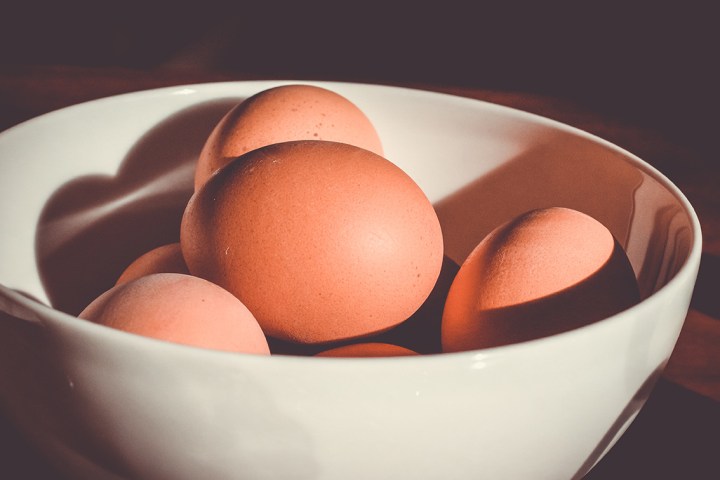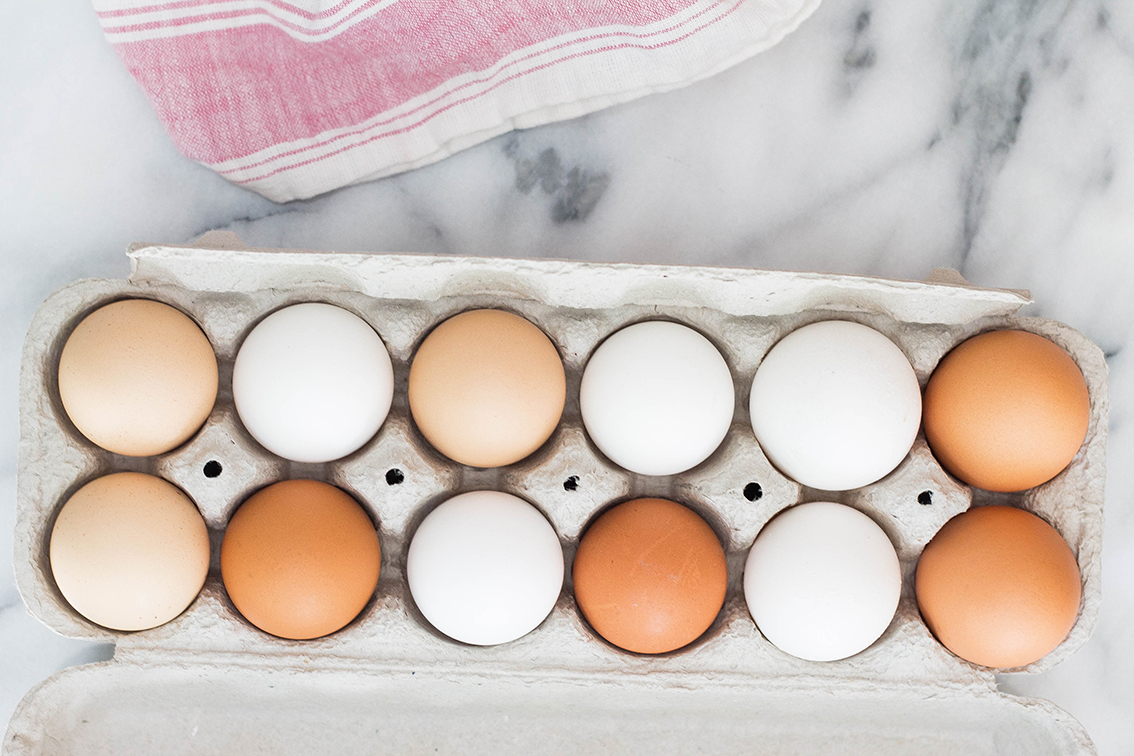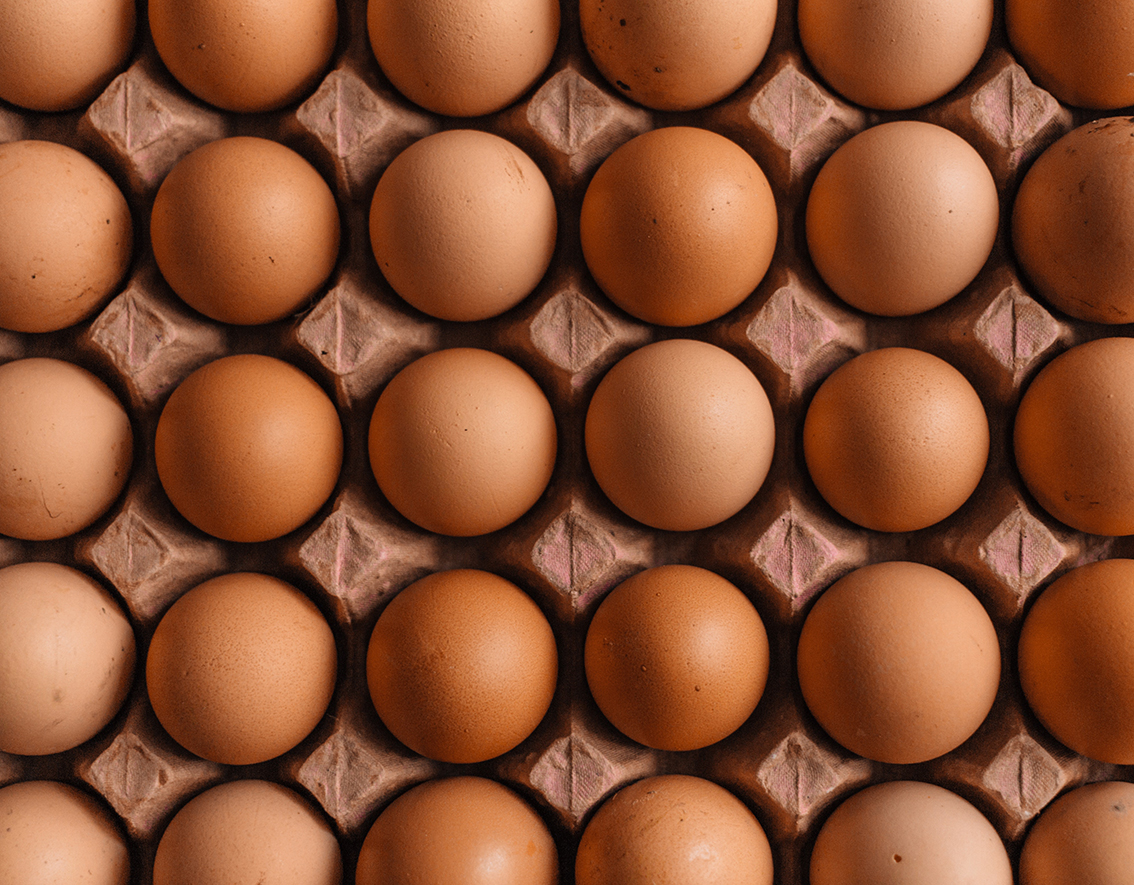GASTROTURF
Things Fall Apart: Without eggs, the centre does not hold

Without eggs, cakes would flop, pastry would not turn golden, a million desserts would not set, a bobotie would be a meatloaf. But our ways with eggs have changed massively through the decades. Penguin eggs boiled in seawater, anyone?
We might get to thinking about eggs when contemplating the calamitous state of human relations. About our embryonic beginnings; the egg as the great leveller, the egg that gives the lie to the claim that we are all different, that we have scant commonality if we come from different cultures. In our basic beginnings, no culture has yet come into play. The egg, or the embryo, does not know it will be Igbo, or Mexican; it’s oblivious as to whether it will be born into one side or other of the divide between coloniser and colonised.
Ironic then that in cooking, it’s the egg – the innocent egg, as yet untainted by the life to come – that brings everything together; the great binder, the fixer, the element without which nothing is as it should or could be. When things have fallen apart in the Big Beige Baking Bowl on the kitchen table, it’s when you add the eggs and they are subsumed by the mixture that everything comes together.
In the cooking of the old Cape Colony, the egg played a significant role. This is complex terrain for any thinker, or any cook for that matter. Things Fall Apart when one culture is subsumed by another, as Chinua Achebe explored in his novel named by those three words. The more complex a society – think the multicultural richness of London, the strange Western-Eastern hybrid that is Hong Kong – the more exciting and varied the local cuisine. At the table, though, is where there’s the best chance of us coming together, of finding our commonality. Maybe it’s when we add the eggs to the Big Beige Baking Bowl that we have another chance to be better.
The gannet, tortoise, wild duck, guinea fowl, bustard, heron, *mollyhawk, penguin, plover, turkey, peahen, ostrich and, of course, the chicken, all have something in common: the egg. But the thing that they have in common beyond that is that the eggs of these birds were all eaten at the old Cape, and generally considered delicacies. (* I know, I had to look it up too: it’s a name that was given to a group of smaller albatrosses at the Cape.)
C Louis Leipoldt, the great writer, activist and liberal (relative, for his day) is, as ever, instructive on the humble yet essential egg. In a chapter on egg dishes in Leipoldt’s Food & Wine (Stonewall), he writes that in his own youth (he was born at the end of December 1880, so was a young man at the turn of the 20th century, by which time he was already a junior reporter), penguin eggs were “quite common and cheap on the Cape Town market” but that “since they came under bureaucratic control they have become scarce, almost unobtainable, and very expensive”. Penguin eggs, according to Leipoldt’s preceptress (an old-fashioned word for teacher), “should be boiled in seawater, steadily for 15 minutes”. This produced “a clear, transparent jelly surrounding an opalescent green yolk that crumbled readily to fine primrose-yellow flaky fragments, for nobody ever ate them soft-boiled”.
As a delicacy, he writes, Malagas (gannet) eggs “were regarded as superior; plovers’ eggs, that could sometimes be bought, were not reckoned anything to be proud of; their flavour was said to be inferior to that of a Malagas egg. Wild duck eggs, bustard eggs (korhaan eiers) and, very rarely, crane’s or heron’s eggs could on occasion also be bought at the market. One of my earliest recollections was that of being treated to half a pelican’s egg, hard-boiled, by the later Mr Saul Solomon, at his house in Sea Point. As I remember, its flavour was harsher than that of a penguin’s egg and its delicacy was not to be compared with that of a Malagas egg.”
Fowls’ eggs, says Leipoldt, ultimately became popular because they were more affordable, “sometimes as cheap as four pennies a dozen, and their cheapness no doubt encouraged the cooks to experiment in many ways to improve them for the table”. And there’s the nub of this story about the common egg: it is its versatility, its great number of uses, both as a meal in itself or as an ingredient of something else in which it is unseen, that makes the egg that great thing that it is to almost every cook.
The Egg Life of the old Capetonian was evidently a much more exotic thing than it is today. Leipoldt’s Ayah’s favourite egg dish, he wrote (it was a different time), was Orange Eggs. Leipoldt hailed from the Clanwilliam region, and she would halve a very juicy local orange, “remove the pips, and scoop out a little of the pulp, sprinkle with salt, break into each half a newly-laid egg, dust with salt and pepper, and bake in the oven till the egg is nicely set”. The Ayah would vary this by using – instead of an orange – avocado pear, large tomatoes, small squashes, baked potatoes, “even small melons first sprinkled with grated nutmeg, salt and a few drops of rum”.

Photo by Alison Marras on Unsplash
No matter how outlandish some of these outydse recipes might seem – such as crayfish egg (“pound some of the soft, greenish-white flesh found adhering to the inner part of the carapace of a boiled crayfish with some salt, ginger powder, boiled egg yolk and some of the coral”) – Leipoldt concludes that there is nothing that can compare with “the simple hard-boiled egg, which has always been considered a delicacy, although some people consider it overrated”.
Whether at the old Cape – and in referring to “cooks”, Leipoldt means, in the main, the cooks in the employ of the big houses of his day, many of whose antecedents would have been slaves – or in France, Greece, Argentina, Morocco, Italy or Spain, the use of an egg in the kitchen is a great leveller. Kings and paupers eat eggs, fried or boiled; rock stars and street buskers, bank managers and rookie clerks, celebrity chefs and inept home cooks, can whip up an omelette, scramble an egg, or swirl the water before popping an egg in to poach.
Larousse Gastronomique quotes the French gourmand James de Coquet: “There is not a celebrity, a marshal, a composer or an opera singer who has not given his name to a method of preparing eggs.” (“Eggs in a Mould Bizet” requires lining buttered dariole moulds with a mixture of minced pickled tongue and diced truffle, into which eggs are broken and cooked in a bainmarie; Soft-boiled Eggs Berlioz require browning oval croustades – usually hollowed-out bread or pastry, but in this case made of duchess potatoes – which you fill with truffles and mushrooms “blended with a very reduced Madeira sauce and place a cooked egg on each”. (Dankie, Larousse.)
Without the inclusion of eggs, most cakes would flop, pastry would not turn golden, a million desserts would not set, a bobotie would be a meatloaf, there would be no custard or mayonnaise; without eggs to bind them, a thousand dishes would not bind properly. Without eggs, things fall apart, the centre does not hold. The French word for the yolk during the Middle Ages was “moyeu”, meaning centre or hub, and Larousse remarks that some people believe the word mayonnaise comes from that.
Eggs might even fend off Bigly Bad Things. Great numbers of them were eaten during the Middle Ages when, says Larousse, “as in ancient Rome, the diner crushed the shell in his plate to prevent evil spirits from hiding there”.
In Greece, eggs and lemons are the hero ingredients of avgolemono, in which the addition of eggs transforms a broth into a thickened sauce. The eggs are beaten in a bowl with lemon juice and then hot broth is added while you whisk (to prevent curdling). Left to sit for a while, the eggs thicken the sauce. In Italy, what would carbonara be without eggs? In Spain, Huevos a la Flamenca is a dish of eggs baked with potatoes, serrano ham, tomatoes, bell peppers, green beans, asparagus and chorizo. In India, Ande ki Bhurji is an egg masala made with coconut, mushrooms, onion, chilli and spices, and Murg Rashida is chicken cooked in an egg sauce – the chicken emerges from a spicy marinade to be browned in a pan in a paste of caraway, bay, onion, and tomato puree. Once the chicken pieces are cooked and set aside, egg is beaten into the hot sauce to create eggy threads, in the way of egg added to a Chinese wok dish in which those strands of egg are such a delight.

Photo by Erol Ahmed on Unsplash
Shifting back to reality, and tradition, there’s one member of my family who has firm, even bolshy, ideas of how an egg should be cooked. Okay, it’s me. As with many mainstream dishes or ingredients, everyone has their way, and most people think they’re right. Don’t tell the sari-swirled aunty at the spice store in Durban how a masala should be mixed. Don’t tell an Italian the best way to make pasta. But eggs? What the hell. I’ll wade in:
-
Fried: Butter. Only butter. Don’t fry them in oil if they’re for me, keep the heat low to moderate so that they cook but don’t form bubbles. Leave the yolk beautifully runny but do scoop some hot fat over the albumen that covers the yolk so that, while the yolk remains runny, you don’t have that horrible gelatinous film that covers it.
-
Scrambled: Butter. Only butter. (Are you starting to pick up a theme here?) My ingredients for scrambled egg: eggs, butter, a small bowl, a metal fork. Melt the butter in a relatively hot frying pan until it foams, add the beaten eggs, leave it while you throw the egg shells away. By the time you’ve returned to the pan the egg will have begun to set slightly at the base. Move it around gently with a fork until it is cooked but still creamy. There’s no need to add milk or bicarbonate of soda. Milk has the effect of making them, well, milky, and too firm. If that’s what you want, be my guest. I know the idea of adding bicarb or baking powder (they’re the same thing) to them makes them fluffier. But what it takes away offsets that, for my taste. I just don’t get it and for me there’s no comparison with the simplicity of whisked eggs cooked over heat in butter.
-
Omelette: See “scrambled” but, instead of stirring with a fork, use a spatula to pull the cooking egg in from the sides, tilting the pan for the runny egg in the middle to run to the sides. Once most of the uncooked egg is distributed, add any filling and continue cooking over a low heat, folding over about halfway through. For an omelette, eggs should be vigorously beaten before adding to the pan, to add as much air as possible. An omelette can attain a fluffy finish without the addition of bicarb or baking powder.
Or, should you happen to have an ostrich egg to hand, you could scramble it Leipoldt’s way: “Mix the whipped egg with a little minced onion, salt and pepper; melt a large lump of butter or fat in a pan; when it begins to brown, stir in the eggs, continue stirring till it is set; serve piled on a dish well dusted with salt and pepper.” Nothing about bicarb or milk there, I see.
Achebe wrote: “A man who calls his kinsmen to a feast does not do so to save them from starving. They all have food in their own homes. When we gather together in the moonlit village ground it is not because of the moon. Every man can see it in his own compound. We come together because it is good for kinsmen to do so.”
Kinsmen. No race, no creed required. From the embryo we come to the table, all as one, one as all, under the sky, in the great moonlit village that is Earth. If only. DM
Read ‘In The Big Beige Baking Bowl’, ‘The Dorp at the End of the World’, ‘Vanilla Hubcaps and Cardamom Dreams’ and other stories about the eccentric and characterful world of food in Tony Jackman’s foodSTUFF (Human & Rousseau), a cookbook-cum-memoir with essays about life and food, illustrated by 60 recipes, which was nominated for the Gourmand World Cookbook Awards (2018) in the category for best food writing. Book enquiries: [email protected]















 Become an Insider
Become an Insider